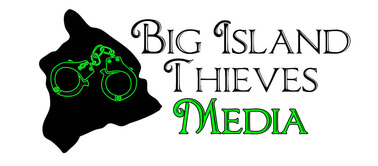(Honolulu) – The DLNR Division of Aquatic Resources (DAR) is releasing Holomua: Marine 30×30, a place-based approach to enhance nearshore fisheries and improve fishing opportunities. This is DAR’s nearshore strategic plan to restore marine resources that support traditional Hawaiian practices, the island economy, and the livelihoods of many residents. The Roadmap to Holomua: Marine 30×30 outlines programs and activities by DAR and its partners to achieve effective management of nearshore waters with at least 30% established as marine management areas by 2030.
Hawaiʻi depends on healthy marine ecosystems. They are a vital source of food for local families, protect our shorelines, support cultural practices and the economy, and create recreational opportunities everyone enjoys. Unfortunately, nearshore waters face unprecedented threats such as rising ocean temperatures that cause coral bleaching, depleted fisheries, land-based pollutants, invasive species, and sedimentation. DAR Administrator Brian Neilson said, “Our nearshore waters need additional management measures for Hawaiʻi to have a healthy ocean ecosystem and fish for the future.”
How do we get to 30×30?
Holomua means to move forward together. DAR will work with communities, fishers, cultural and scientific experts, and local stakeholders to achieve the many aspects of effective management. The tools that DAR has to offer are within the four pillars of management activities supporting Holomua: Marine 30×30.
Place-Based Planning:
Focuses on the building of a network of marine management areas (MMAs) making up at least 30% of the nearshore for each of the main Hawaiian Islands. The many communities around each of our islands are unique for specific types and numbers of fish and other marine resources. There are island-by-island and community-by-community differences in fishing practices. MMAs will have rules and management plans to reflect the priorities of each local community based on the best readily available science. This does not mean full no-take areas, but rather tailored regulations and management to best support the resources of each place. The areas will work together in a network to provide benefits outside their boundaries such as protecting a variety of marine habitats and supporting the replenishment of fish.
Pono Practices:
Is a call to action for responsible ocean user behaviors. Pono refers to moral resource use and balancing to take only what you need. A mix of outreach and education efforts, statewide rules, and enforcement strategies will encourage pono practices and kuleana (responsibility) for marine resources. When proposing new rules, DAR wants fishers, user groups, scientific and cultural experts, and the DLNR Division of Conservation and Resources Enforcement (DOCARE) to be involved in every step.
Monitoring:
Increases our collective knowledge of the marine ecosystem by improving DAR’s monitoring program, partnering with community-based monitoring programs, and integrating traditional observational practices (kilo) and fisher-dependent surveys. Monitoring highlights where management actions need to be improved: including biological data from the ecosystem, social data from resource users, citizen/ community science, and human use statistics.
Protection and Restoration:
Prevents further damage to fragile nearshore ecosystems and rebuilds degraded habitats and fisheries with coral restoration, invasive species prevention, and watershed and estuary restoration. DAR collaborates with partners, mauka to makai, to address run-off and land-based pollution, marine debris, and other local and global impacts to our nearshore waters.
Dive Deeper into 30×30
Holomua: Marine 30×30 is an opportunity and an invitation for Hawai‘i’s people to help achieve a shared vision of a healthy nearshore ecosystem with abundant resources that allow the people of Hawai‘i to enjoy our coastal waters, support our local livelihoods, and feed our families. DAR hopes the release of the Roadmap to Holomua: Marine 30×30 encourages the participation of community members, local, state and federal government agencies, and other stakeholders to help usher in a new era of place-based adaptive management.
